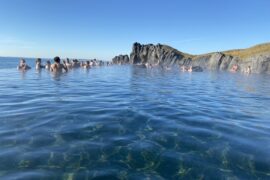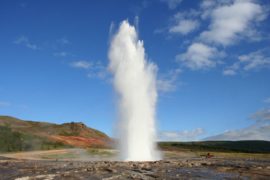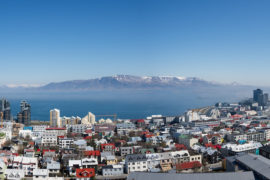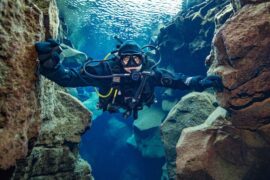We might be a bit biased, but we love visiting Iceland in summer.
Sure, the country looks particularly picturesque covered in snow – and some of our writers swear by a winter visit – but a summer trip is hard to beat.
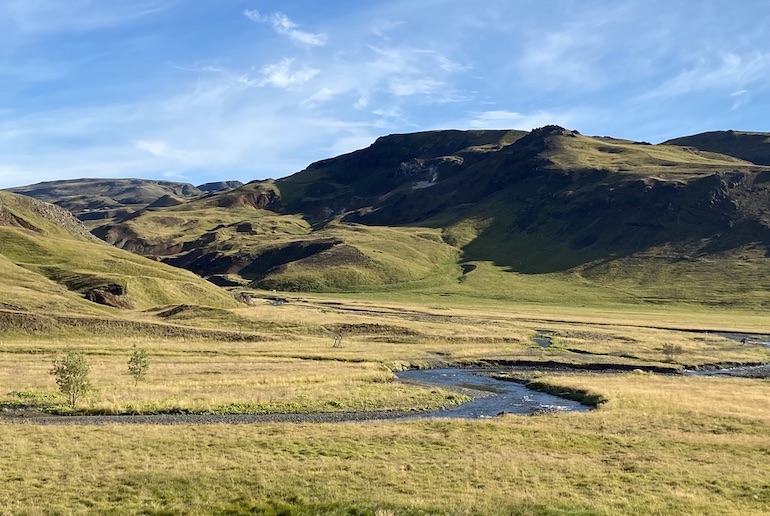
Iceland is one of those places where you can have a completely different experience depending on when you visit.
But we think the long days, hikes along glacial valleys and up volcanoes, whale-watching trips and dancing beneath the midnight sun are all good reasons to visit Iceland in summer.
Our top 3 summer tours in Iceland
- Puffins can only be seen on land from late-May to August, so if you’re here in summer we really recommend this fun boat trip to see puffins nesting.
- Go kayaking amongst towering icebergs on a lagoon by the Sólheimajökull glacier. This tour is only possible from May to mid-Oct.
- Watch whales beneath the midnight sun, on this magical evening whale-watching boat trip, available from mid-June to early July.
When is summer in Iceland?
Lasting from June to late-August, summer is a relatively short season in Iceland, though we think that makes it all the more magical.
June 21st is the longest day, of course, with the midnight sun lasting from mid-June til the end of the month.
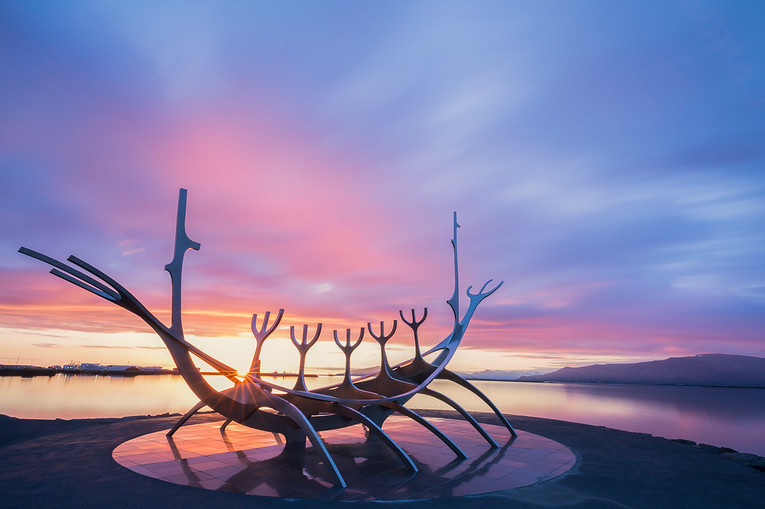
In fact, being just below the Arctic Circle, Iceland doesn’t actually have 24 hours of daylight, though it may feel like it does.
On midsummer’s day in Reykjavik, the sun sets about midnight and rises just before 3am. However, because it only just hovers below the horizon there is still a glimmering light and it never gets truly dark.
And while June 21st may be the official midsummer, it’s not necessarily when you’ll get the warmest or driest weather – as you can see from the table below.
| June | July | August | |
| Average daytime temperature | 11C | 13C | 12 |
| Sunshine hours | 5 | 6 | 5 |
| Days with some rainfall | 17 | 18 | 18 |
| Monthly rainfall | 67mm | 66mm | 83mm |
| Average hours of daylight per day | 21 | 20 | 16 |
However, summer is one of the busiest times of the year in Iceland, with some 250,000 people visiting in July and August of 2022.
Compare that with the number of visitors in January 2023, which was around 120,000. So yeah… less than half.
Pros of visiting in summer
- Longer daylight hours, so more time to explore
- A wider range of tours and activities available
- You may get to see the midnight sun
- The weather is better, so you can go hiking and get off the beaten track
- You can save money by camping
- You can see puffins and whales
- Reykjavik has a more lively vibe, with outdoor café tables and a vibrant street life
Cons of visiting in summer
- It’s more expensive
- It’s more crowded
- It can be harder to sleep, when it’s daylight around the clock
- There’s no snow
- You’ll need to book accommodation and tours further in advance
- You won’t see the northern lights
Things you can only do in summer
Go puffin watching
Iceland is home to the world’s largest colony of Atlantic puffins, and is a hotspot for these cute, quirky birds.
For most of the year they roost out at sea, but in May or June, they come in to nest and breed on the cliffs around the island.
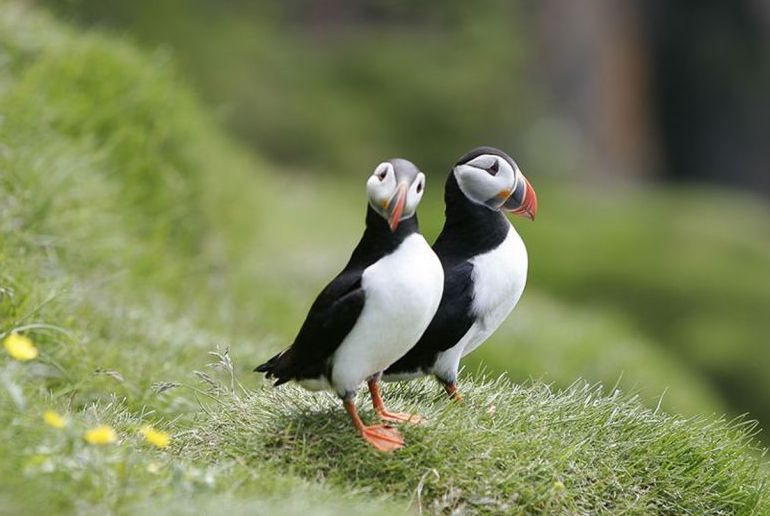
So between late-May and August, you can take a boat trip from Reykjavik to watch them in their cliff-top colonies – and if you’re lucky you may even see the baby pufflings fledge.
For more on puffin watching in Iceland, see our guide to when and where to see puffins in Iceland.
Eat ice cream in Iceland
Ice cream in Iceland is just the thing for a warm summer’s day and liquorice ice cream is a local delicacy that you have to try at least once.
Our favourite place to go is Valdis in Grandi where you can try flavours such as salted liquorice, rye bread and rhubarb skyr.
We really like the chocolate liquorice ice cream, which is a good starting point for liquorice ice cream novices!
Climb a volcano
Iceland’s peak hiking season is in summer, when you can safely explore some of Iceland’s dramatic valleys, ridges and mountains, and even climb a volcano.
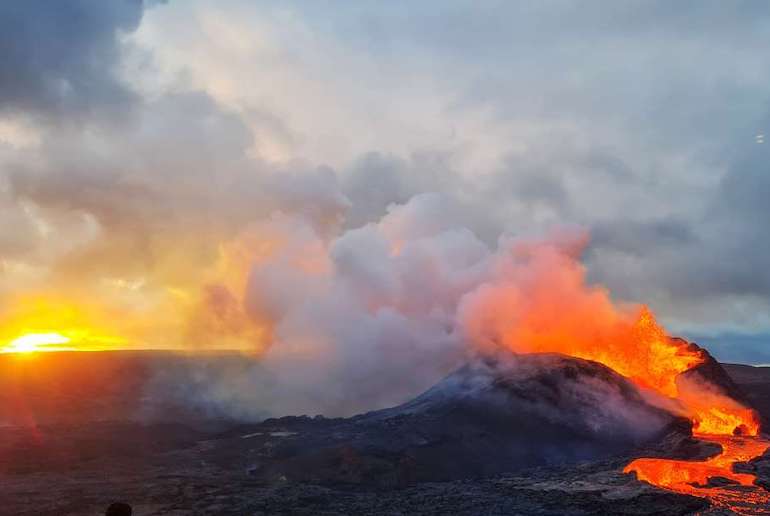
Some volcano tours, such as this one led by an expert volcanologist, run year-round but it’s an easier trek in summer and there’s a smaller chance of it being cancelled due to bad weather.
And if you want to head off hiking, trekking or climbing a volcano independently, you should definitely do it in summer rather than winter.
Take a summer road trip
Summer is the best time to explore the island, when all the roads are open and you can access places that are cut off by snow in winter.
In summer you can drive all the way round the Iceland Ring Road, the ultimate Icelandic road trip. For more on road trips in Iceland, see self-drive tours in Iceland.
Watch whales in Icelandic waters
Although there are whales all year in the waters round Iceland, April to September is when migratory species visit and you have a much better chance of seeing these magnificent mammals.
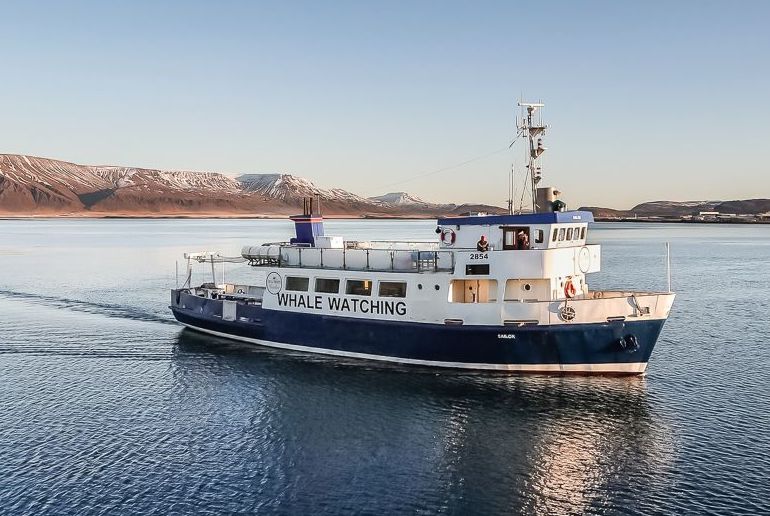
Taking a boat trip to find them is also a much nicer experience when the seas are calm and the sun is shining!
For more whale-watching in Iceland, check out our full guide.
Party under the midnight sun
Like all Nordic midsummer festivals, Iceland’s Jónsmessa is magical time of partying and celebration.
Traditionally, it’s the time of the year when elves appear, cows can talk, seals become human and herbs and stones gain magical powers. Yes, we told you it’s a special time of year.
It’s also when the Secret Solstice festival is held near Reykjavik, an annual party when you can rave in a lava cave, listen to the likes of Stormzy and the Black Eyed Peas and dance beneath the midnight sun.
Camp on a lava field
Hardened campers might be tempted to pitch a tent in winter in the snow, but many campsites in Iceland are only open in the summer, when it’s a great way to stay in a beautiful location on a budget.

Unlike other Scandinavian countries, camping wild is not allowed in Iceland, but this is not a problem as there are loads of really lovely countryside campsites, on beaches, up mountains and by rivers and waterfalls.
Taking your own tent is the cheapest way to camp, but loads of sites also have glamping pods, yurts, ready-erected safari tents and chalets that you can stay in too.
Hike to a hot river
OK, so you can enjoy a thermal hot pool in Iceland all year-round, but there are some that are only accessible in summer, particularly the natural ones that you have to walk to.
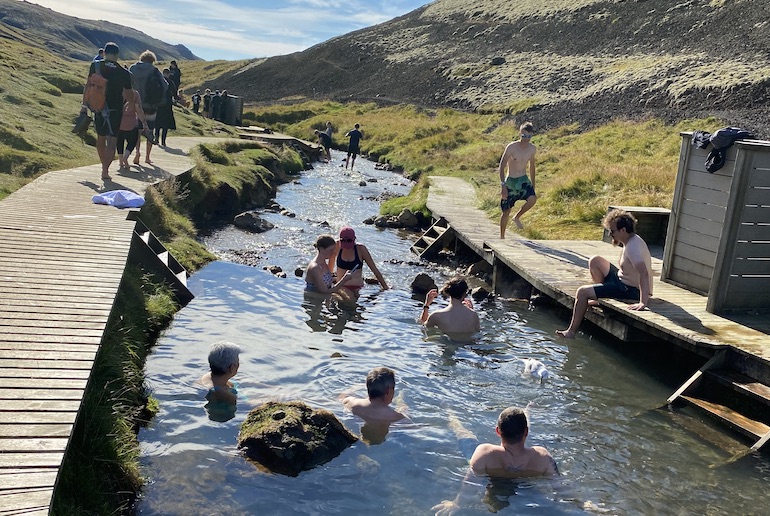
We particularly love the hike to Reykjadalur, the “steam valley”, which takes about an hour and is only recommended in summer.
You walk over hills, past bubbling mud pools and along a beautiful valley until you reach the steaming river, where you can wallow in warm water.
For more walks to hot springs, see 11 best hot springs in Iceland.
Things you can’t do in summer
Of course, there are some activities that you need snow for, but Iceland is home to some of Europe’s largest glaciers where you can ride a snowmobile and ski all year-round.
Probably the only activity that you can’t do in summer is to see the northern lights. You need dark skies and if you visit in summer, you’re very unlikely to get a sighting of the aurora borealis.
Our best tips for visiting in summer
- Book in advance. Even campsites get booked up fast in summer, so if you want a specific hotel, apartment or campsite, reserve as far ahead as you can.
- Bring insect spray. Midges are bad in July around lake locations such as Myvatn, so wear long sleeves and trousers and come prepared with bug repellent.
- Be prepared for all weathers. Yes, it’s summer but you’re just as likely to get rain, wind and cold spells as well as sun – sometimes all in the same day. So, bring clothing for all weathers and wear layers so you can strip off if the sun is out and wrap up if it rains.
- Book an inside room if you’re a light sleeper. Most hotel rooms have blackout blinds but if you’re visiting in June you may want to splash out on a windowless room. Weirdly, in summer these often cost more than a room with a view!
What’s the best summer month in Iceland?
If you’re visiting Iceland in summer, we think you should come in the last two weeks of June when you can experience the full-on midnight sun and celebrate the unique Jónsmessa festivities with the locals.
But if that seems too crowded and expensive for your liking, we would go for mid to late August. You often get decent weather, the days aren’t quite as long but you can still do the same range of activities and hikes as in June.
What about May and September?
Full disclosure here – our last trip to Iceland was in September, and we had some of the best weather the country had seen all year.
With bright blue skies and warm sunshine, it was like visiting in summer but without the crowds – and cheaper. We saw whales, went hiking and the northern lights even made an appearance!
And in May, you’ll still get long days, reasonable weather and cheaper prices, so we definitely recommend visiting in the spring and autumn shoulder seasons.
See also:
Iceland packing list: what to bring with you
Helicopter tours in Iceland
Scuba diving in Iceland: the best tours


